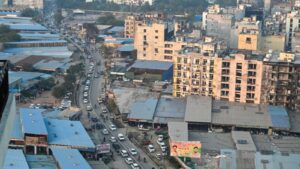Bengaluru Resident Fined Over ₹15,000 for Keeping Shoe Rack in Apartment Corridor
Prestige Sunrise Park Resident Fined Over ₹15,000 for Refusing to Remove Shoe Rack from Common Area Despite Multiple Reminders


Bengaluru Resident Penalised More Than ₹15,000 for Not Removing Shoe Rack from Apartment Corridor
In a peculiar Bengaluru Electronic City case, a resident of Prestige Sunrise Park paid more than ₹15,000 in penalties for not taking away a shoe rack installed near their apartment, even after several reminders and increasing levels of penalties.
The Times of India in a report has stated that the residential complex, located in the Norwood block of the society, recently kicked off a campaign to remove all personal items—like shoe racks, potted plants, and storage boxes—from corridors. The drive was launched with an aim to improve corridor safety and following fire safety standards that prescribe unobstructed exit routes in multi-storeyed buildings.
After a two-month grace period, during which notices and several rounds of correspondence were made, almost all 1,046 flat owners had acquiesced to the new regulations. The Residents’ Association met and issued notices to offer residents sufficient time and understanding to comply with the regulations. Two households only refused the shift initially. While one of them ultimately cleared out their belongings, the second remained resolute.
The concerned resident, living at the Norwood block, continued to store a shoe rack outside his apartment even after repeated warnings. Arun Prasad, president of Residents’ Association, clarified that the resident had paid an advance fine of ₹15,000, asking it to be taken into account as a future payment towards daily penalties. At present, the community inflicts a fine of ₹100 per day on such violations but is considering hiking it to ₹200 for this particular case.
“Common spaces are not for personal storage,” Prasad underscored. “Although we appreciate most residents adhering to regulations, such frequent violations create a serious safety risk, particularly if there is a fire or emergency evacuation.”
The community observed that, initially, at the beginning of the drive, almost half of the residents had some kind of personal item parked outside their apartments. Gradually, as a result of joint efforts and discussions, adherence greatly increased. Nevertheless, the adamant resident’s refusal to cease such action has brought the significance of keeping public passageways clear for security and readiness in case of emergencies into the spotlight.
Even after the continuous fines and reminders, the resident has stood firm in their position, refusing to keep the shoe rack indoors and wishing to be left alone over the issue. The society is still keeping a close eye on the situation and contemplating further action to implement safety rules evenly throughout the complex.






